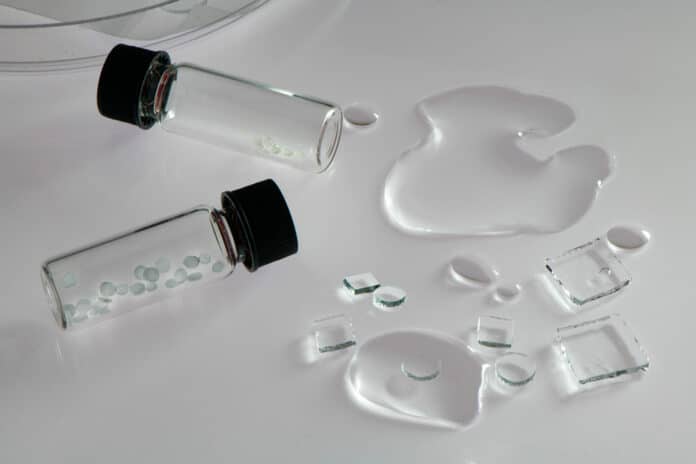A common occurrence in nature, water vapor sorption is crucial for several processes, including humidity control, energy storage, thermal control, and water harvesting. To avoid dehydration and increase the water uptake’s tunability, it is essential to capture moisture at high temperatures. Although sorbents necessarily tend to absorb less water vapor at higher temperatures due to the thermodynamic limit of traditional materials, this limits the range of their uses.
MIT engineers have now found that polyethylene glycol (PEG) — a hydrogel commonly used in cosmetic creams, industrial coatings, and pharmaceutical capsules — can absorb atmospheric moisture even as temperatures climb. The material doubles its water absorption as temperatures rise from 25 to 50 degrees Celsius (77 to 122 degrees Fahrenheit).
PEG is resilient because of a heat-induced change. The hydrogel’s architecture changes from a crystal to a less structured “amorphous” phase as its environment warms, which improves the substance’s capacity to hold water.
The scientists created a model that can be used to construct additional heat-resistant, water-absorbing polymers based on the unique features of PEG. The company thinks that, especially in desert areas, such materials might one day be used to create machines that extract moisture from the air for drinking water. To control temperature and humidity more effectively, the materials might be added to heat pumps and air conditioners.
Lenan Zhang, a research scientist at MIT’s Department of Mechanical Engineering, said, “A huge amount of energy consumption in buildings is used for thermal regulation. This material could be a key component of passive climate-control systems.”
During tests, PEG grew heavier and continued to absorb water as the temperature rise.
Xinyue Liu at MIT said, “At first, we thought we had measured some errors and thought this could not be possible. After we double-checked everything was correct in the experiment, we realized this was happening, and this is the only known material that shows increasing water absorbing ability with higher temperature.”
Zhang said, “In the crystal phase, only a few sites on a polymer might be available to attract water and bind. But in the amorphous phase, you might have many more sites available. So, the overall performance can increase with increased temperature.”
Now that the group has worked out a theory, they plan to use it as a blueprint to design materials specifically for capturing water at higher temperatures.
Liu said, “We want to customize our design to make sure a material can absorb a relatively high amount of water at low humidity and high temperatures. Then it could be used for atmospheric water harvesting, to bring people potable water in hot, arid environments.”
Journal Refernce:
- Xinyue Liu, Lenan Zhang, Bachir El Fil et al. Unusual Temperature Dependence of Water Sorption in Semicrystalline Hydrogels. Advanced Materials. DOI: DOI: 10.1002/adma.202211763
